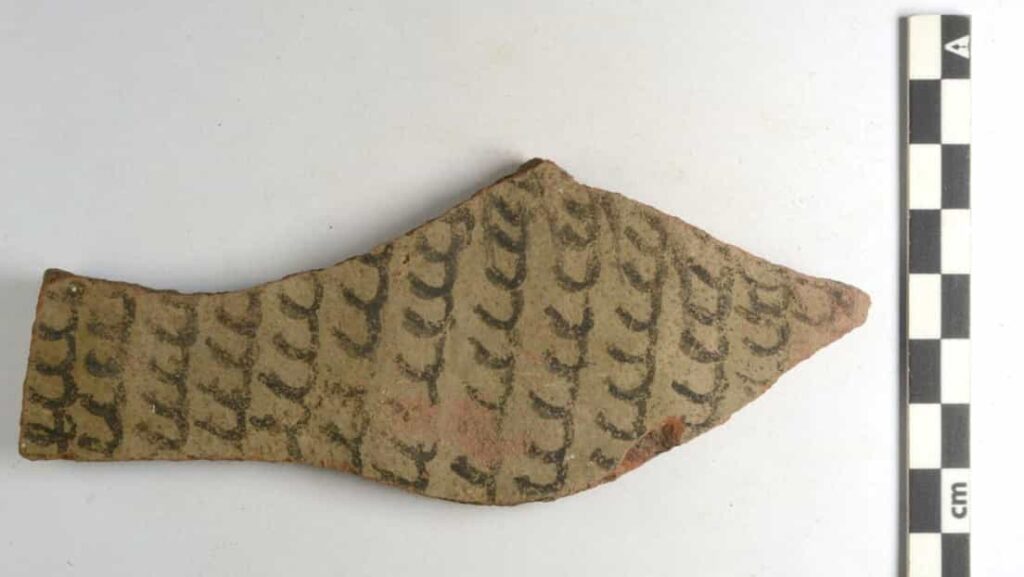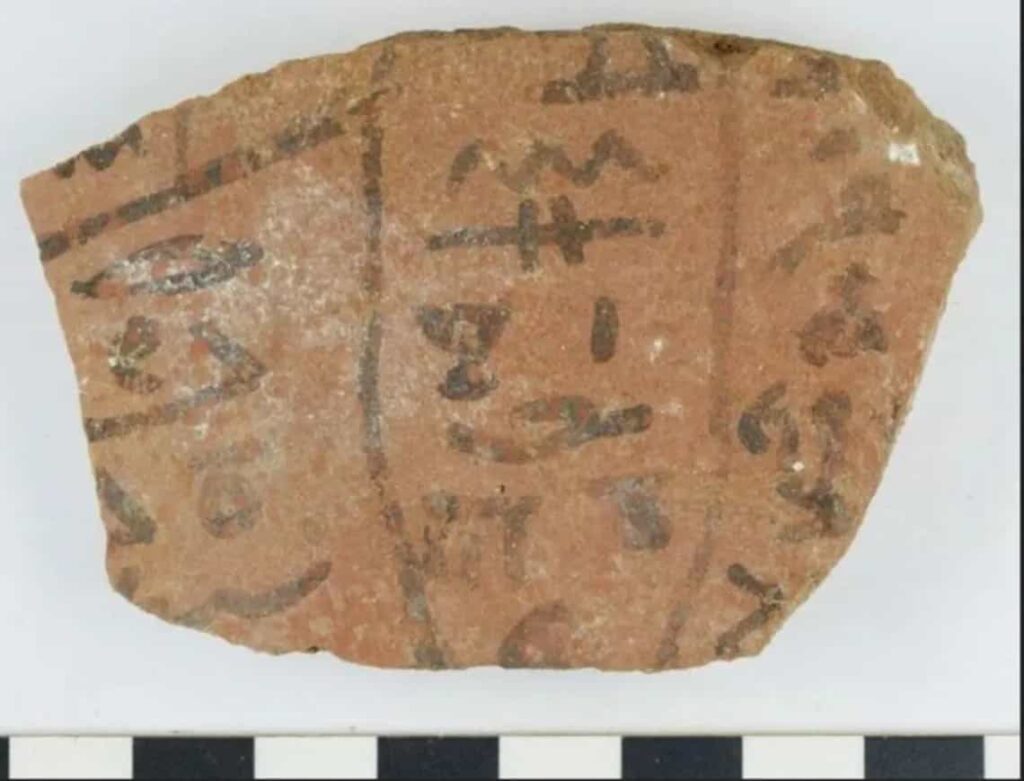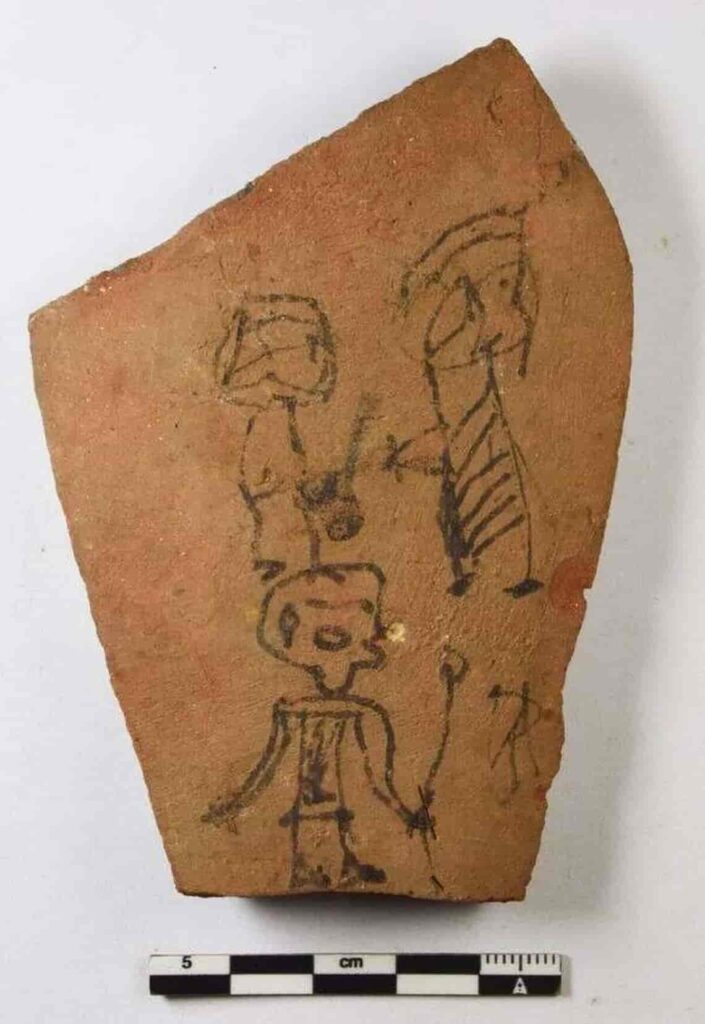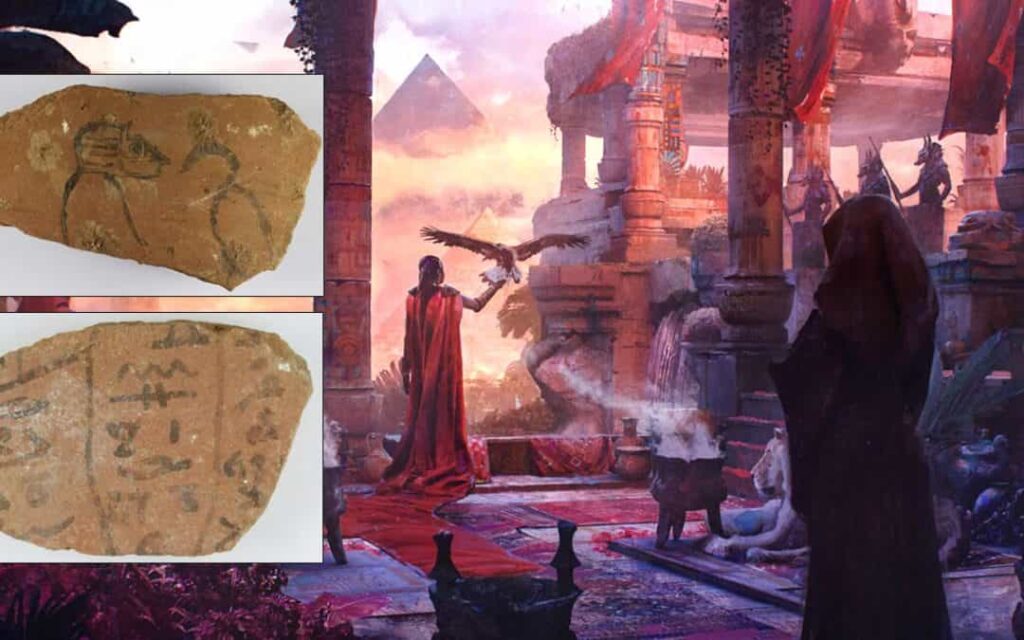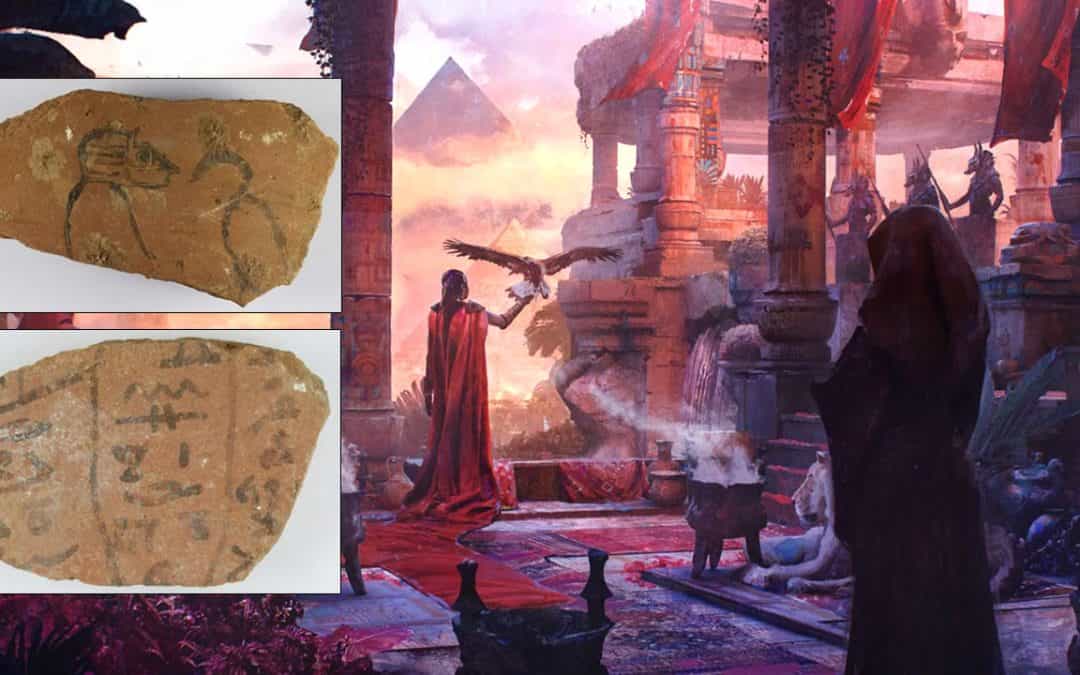A team of archaeologists has made a significant discovery of ancient records documenting daily life in ancient Egypt. In the city of Athribis, located on the west bank of the Nile, the researchers have cataloged more than 18,000 pieces of inscribed pottery known as “ostraca.”
These ceramic fragments were used in ancient Egypt on a daily basis for recording trades, shopping lists, copying literature, and teaching students to write and draw.
Many of the ostraca found at the Athribis site appear to be the remains of an ancient school. There are lists of months, numbers, arithmetic problems, grammar exercises, and a “bird alphabet” with each letter assigned to a bird whose name began with that letter.
Over a hundred of the ostraca found at Athribis have repetitive writing exercises, with the same characters written over and over on the front and back.
Most of the notes discovered are written in Demotic, an administrative script used during the reign of Ptolemy XII (Cleopatra‘s father), who ruled from 81 to 59 BC and then again from 55 to 51 BC.
During this time, Athribis was the capital of an Egyptian state along the Nile River. Although Demotic was the most popular script of the time, a simplified form of hieroglyphics was still taught to children.
The various languages seen on the Athribis ostraca, including hieroglyphics, Greek, Arabic, and Coptic, reveal the city’s multicultural and tumultuous history. The Coptic alphabet, for example, is a mixture of Greek and Egyptian languages and is closely related to Christianity.
Only once before has such a large collection of ostraca been found, and that was in the early 20th century in the ancient town of Deir el-Medina. The ostraca discovered there were mostly notes on medicine and medical practices. The Athribis ostraca, on the other hand, can provide insight into daily life in one of the most powerful civilizations of the ancient world.
